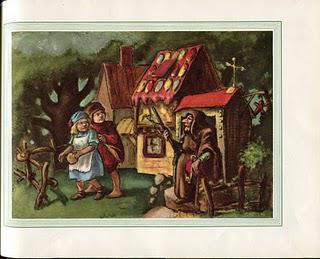
WARREN CHAPPELL was born July 9, 1904 in Richmond, Virginia on his grandfather's truck farm. His grandfather "had been involved with socialism since the 1880s, despite his service from sixteen to twenty throughout the Civil War." His father worked as a manager for a railroad company and his mother as a secretary at a publishing house. Chappell's artistic talent was recognized at a young age to the extent that an elementary art teacher arranged for a "large vat of clay at the [school] I was attending so I could practice modeling after hours like those who had to practice piano and violin." He attended public high school and then the University of Richmond, neither of which offered quite the artistic instruction he hoped for. Consequently, upon reading of the Art Students' League of New York, he made arrangements to spend the summer of 1923 there, and then resolved to attend the League upon graduation from college in 1926. During his time at the Art Students' League he began working in several capacities in the book trade. His steadiest employment was as the promotional art director at the weekly magazine Liberty. In 1931, Chappell moved to Germany to study at the Offenbacher Werkstatt with Rudolf Koch, a master type designer. "With Koch...Instead of learning how to design a letter, I was helped to learn what a letter is." After one year, Chappell returned to the United States and worked as a freelancer in New York City until 1935 when he moved west to Colorado Springs in order to study with Boardman Robinson, an illustrator that had been a seminal inspiration to him when Chappell was a boy.

"We returned to New York in September of 1936...Almost immediately, I was asked to act as designer and adjunct illustrator for a new edition of the 'Junior Classics,' a multivolume collection published by Crowell-Collier who were responsible for 'The Harvard Classics.' Aside from the physical appearance of the set, I was to make illustrations where classic ones were unavailable. The project was under the direction of Anne Carroll Moore, the almost legendary figure in the history of twentieth-century juvenile literature. It is likely that Henry Quinan recommended me for the commission."

"I have been fortunate in knowing a number of the key players in the field of children's books: Frances Clarke Sayers of the New York Public Library and Bertha Mahoney Miller of The Horn Book, for instance, but it was Lillian Bragdon, at Knopf, who managed to make me feel most comfortable with her commissions, and that is what an editor is supposed to do. Our first notable collaboration was Peter and the Wolf, by Prokofieff. We included the musical themes and made the book in a long, narrow format. Serge Koussevitsky was Prokofieff's representative in America and it was he who brought the work to the attention of his friends, Blanche and Alfred Knopf. The publication date was 1940."


At this point, Chappell's career becomes impossible to encapsulate. He did pivotal work for every major house and many minor publishers and served for thirty-four years as consultant to the Book-of-the-Month-Club. He produced editions of Shakespeare, Don Quixote, Flaubert, Mark Twain, Melville, Tom Jones, Jane Austen, Charles Dickens, Robert Frost, All the King's Men, and countless others.

"Eighteen years had elapsed since Peter and the Wolf and fourteen since Hansel and Gretel, when I returned to what was to become the music series with The Nutcracker. [For more art from The Nutcracker see my post from this past Christmas.] The suggestion came from Virginie Fowler, editor of Knopf juveniles. I felt it was necessary to prepare a text that would return to the spirit of the Hoffman original and kept that in mind while make the adaptation. In the intervening years, I had developed the use of retoucher's warm opaques in making my speparations which could give me greater control of the value combinations. The text was set in monotype Bembo and this continued for the succeeding five titles in the series."

For Chappell's thoughts on the three books in the music series with text by Updike see my previous post here.

In 1970, at the request of The New York Times, Chappell wrote a book about printing entitled A Short History of the Printed Word. A second edition was released in 1999. In 1978, Chappell became artist-in-residence at the University of Virginia where he had already begun to deposit his archives. He remained in the position until his death of heart failure on March 26, 1991.

The quotes for this post come from Warren Chappell's autobiographical essay in volume ten of Gale's journal Something About the Author (1990). Additional background information from "Warren Chappell." Contemporary Authors Online, Detroit: Gale, 2003. I hope to post more images from all of these books (including at least one book in full) shortly.

All images are copyrighted © and owned by their respective holders.


